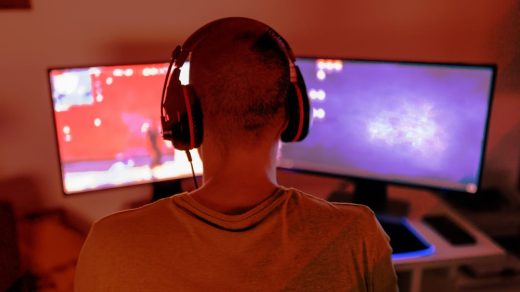A ‘Counter-Strike’ map is raising awareness of Putin’s brutality to everyday Russians
The Counter-Strike first-person shooter games are some of the world’s most popular, particularly in Russia. Now, some Russian gamers who access a downloadable map released today, called de_voyna, will be confronted with the reality of what their country’s army, at the behest of President Vladimir Putin, is doing in Ukraine.
An initiative of Finnish newspaper Helsingin Sanomat, the map contains verified information about war atrocities and the real reasons for the invasion of Ukraine. The newspaper’s journalists have collected pictures and voice recordings of the reality on the ground, and the harm being done by Russian troops, which players will be able to interact with.
Russian propaganda suggests—without evidence—that the invasion of Ukraine was launched with the goal of stopping the spread of Nazi ideology within the country; the goal here, then, is to offer an unsanitized version of the war, which has been going on since February 2022.
Helsingin Sanomat launched its initiative to mark World Press Freedom Day, and aims to reach the 4 million Russians who play Counter-Strike: Global Offensive. More Russians play the video game than citizens of any other country, according to data from Leetify, a third-party video game stats tracker.
“We figured out online games didn’t yet get banned or blocked in Russia,” says Antero Mukka, editor-in-chief of Helsingin Sanomat.
Designing the maps was the product of a monthslong collaboration between the newspaper and the creative agency Miltton. The two organizations met in early 2023 to determine how they could spread word of Russian atrocities to its people, given the newspaper—alongside more than 100 others—has been banned within Russia since the full-scale invasion of Ukraine.
“After the planning session I went home, and on my way from the bus stop to my house I got the idea of creating a Counter-Strike map and hiding independent journalism in it,” says Roope Sandberg, a creative and art director at Miltton.
Sandberg hit on the idea of Counter-Strike because he himself is a player. “After the beginning of Russia’s war on Ukraine I’ve been wondering why the developer of the game hasn’t closed it from Russian players, even though the gaming community has asked for actions repeatedly,” he says. “Why, then, not use this loophole to our advantage in delivering independent information via the game to Russian Counter-Strike players?”
The method of getting unfiltered, accurate information into Russia despite nationwide press censorship mirrors past attempts to break through the firewall and alert Russians to their government’s actions: Last year, for example, activists bought online ads on social networks in Russia.
Miltton outsourced the mapmaking to two specialized Counter-Strike mapmakers from Australia and Denmark, who asked not to be named for fear of repercussions. They were given a brief to design a Slavic-style city purposefully made to echo some of the cities that Russia’s soldiers may have desecrated throughout their invasion. (Valve Corp., maker of the Counter-Strike series of games, was not consulted before the community-made map was launched in-game.)
The mapmakers liaised with friendly Russians to produce painstaking details that Russian gamers would recognize, including local brands and logo-covered garbage similar to what one would find on a Russian street. Players walking through de_voyna will have strong memories of Kherson, which Russian troops occupied for months and from where they operated an extrajudicial torture center, according to Human Rights Watch.
“We’ve seen what’s happened there and how the Russians are behaving there,” says Mukka of Helsingin Sanomat. “We have more than 1,300 kilometers of border with Russia. We are deeply interested in what’s going on there, and have been following very desperately what’s been happening.”
Mukka hopes that the release will get a lot of attention. “People have a right to know,” he says. “We want young Russian men to think for a while that there could be another reality compared to what their state is presenting.”
Sandberg adds, “If we manage to reach even a small fraction of the 4 million Russian Counter-Strike gamers, the project might have made a difference between someone’s life and death.”
Sandberg reasons that most Russian gamers are likely to be men of military age—and therefore those most likely to be conscripted into taking part in Putin’s war on Ukraine. “If we make them aware of the objective truth of their countrymen’s actions in Ukraine, maybe we [will] manage to turn some of their attitudes against the war.”
(16)



